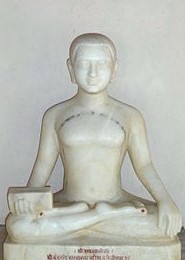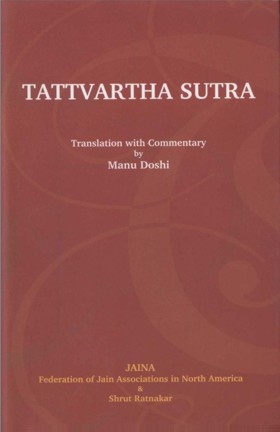05.32 Snigdharookshatvadbandhah
Audio: Sanskrit: स्निग्धरुक्षत्वाद् बन्ध: ।
Hindi: स्निग्धत्व और रुक्षत्व से बन्ध होता है।
05.33 Na Jaghanyagunānām
Audio: Sanskrit: न जघन्यगुणानाम् ।
Hindi: जघन्य गन अर्थात् अंशवाले स्निग्ध और रुक्ष अवयवों का बन्ध नहीं होता।
05.34 Gunasāmye Sadrshanam
Audio: Sanskrit: गुणसाम्ये सदृशानाम् ।
Hindi: समान अंश होने पर सदृश अर्थात् स्निग्ध के साथ स्निग्ध अवयवों का तथा रुक्ष के साथ रुक्ष अवयवों का बन्ध नहीं होता।
05.35 Dvyadhikādigunanām Tu
Audio: Sanskrit: द्वयधिकादिगुणानां तु ।
Hindi: दो अंश अधिकवाले आदि अवयवों का बन्ध होता है।
05.36 Bandhe Samādhikau Pārināmikau
Audio: Sanskrit: बन्धे समाधिकौ परिणामिकौ ।
Hindi: बन्ध के समय सम और अधिक गुण, सम तथा हीन गुण के परिणमन करानेवाले होते है।
05.32-36
English: When two or more Paramānus are bound together, they form a Skandha. Similarly two or more Skandhas can be combined to form a bigger Skandha. Such combinations depend upon the viscosity or dryness of the matter coming in contact. This aspect has been discussed at great length in various commentaries of the text. In short, it can be said that if Paramānus or Skandhas bearing two or more degrees of viscosity come in contact with those bearing the same or higher degrees of dryness, they would be bound together. In case two Paramānus and/or Skandhas of the same type come in contact, the binding would occur, if one of them bears at least two degrees higher viscosity or dryness than the other. During the process of binding the Paramānus or Skandhas bearing the higher degree of viscosity or dryness transform the property of the other matter to its own property.
 Acharya Umaswati
Acharya Umaswati
